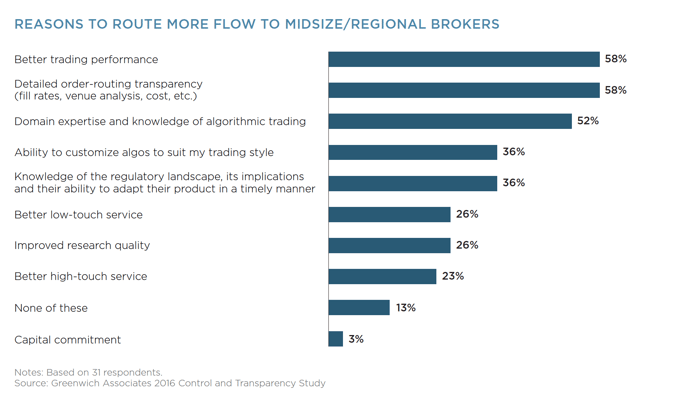This week an article in the Wall Street Journal, “High-Frequency Traders Fall on Hard Times - Once- lucrative business is now fighting unfavorable market conditions, brutal competition and rising costs”, paints a picture where high frequency trading is no longer the business that it used to be due to less volatility in the market and access to speed for those willing to pay.
While I agree in part with the assessment, and there are sure signs of a reduction in activity, depressed revenues, and consolidation and complete exits of high frequency trading firms, it does not mean they are down for the count.
High frequency traders are short-term and alpha driven. At the first sign of volatility in the markets they will return and likely be faster than before. Therefore, this is not the time for brokers to become complacent, but actually more vigilant in measuring the performance of their trades and the venues they are accessing for the benefit of their buy side clients.
You can protect yourself from the tactics of high frequency traders once you know how they are capitalizing on the inefficiencies in market microstructure and you have the means to combat their attempts to pick you off.
We believe that can only happen when you have true transparency into the lifecycle of your trade and the control to customize your routing protocols, including venue selection. This is not only true in combating high frequency traders, but is also required to competitively service the needs of your buy side clients.
In a recent Greenwich study, “Control and Transparency – How the Buy Side Seeks to Manage Their Broker Network”, over 50% of buy side traders survey cited better trading performance, detailed order-routing transparency, and domain expertise and knowledge of algorithmic trading as reasons to route more flow to midsize/regional brokers.

Buy side traders are demanding performance, transparency, and an understanding of market microstructure and algo performance as it impacts their best execution. Brokers who want to effectively compete for this business and also protect themselves against the tactics of high frequency traders should demand:
- Truly transparent algorithmic trading tools that offer complete control of routing and execution, and the actionable analytics to inform optimizations.
- A trusted electronic trading partner who understands and shares the impacts of market microstructure on trading performance
- The ability to manage trading costs and maintain performance, especially in light of MIFID II and the unbundling of research from execution.
While there is a reprieve, there is lots of work to be done. Don’t become complacent, do your due diligence, and choose an algorithmic trading partner who keeps you competitive and protected from the likes of high frequency traders.
